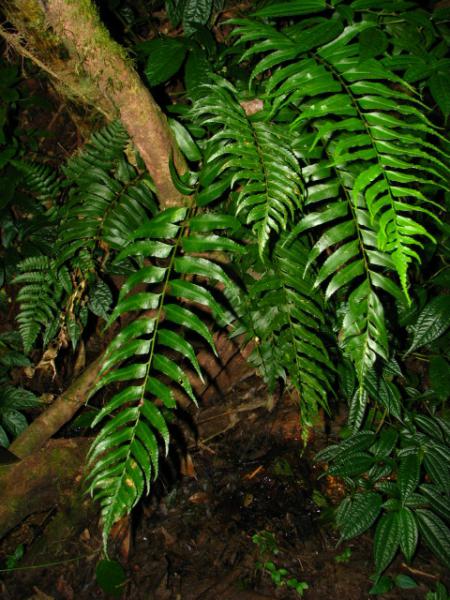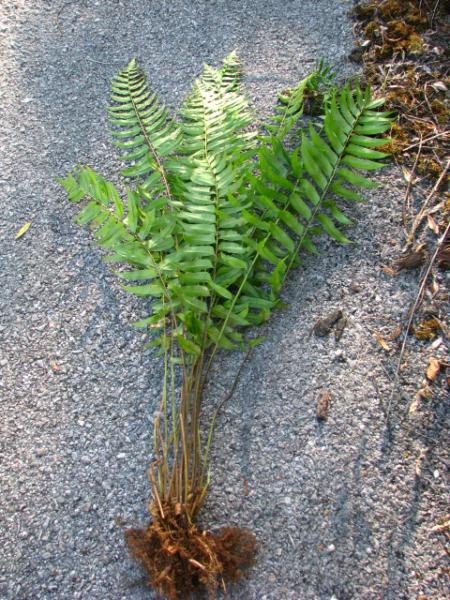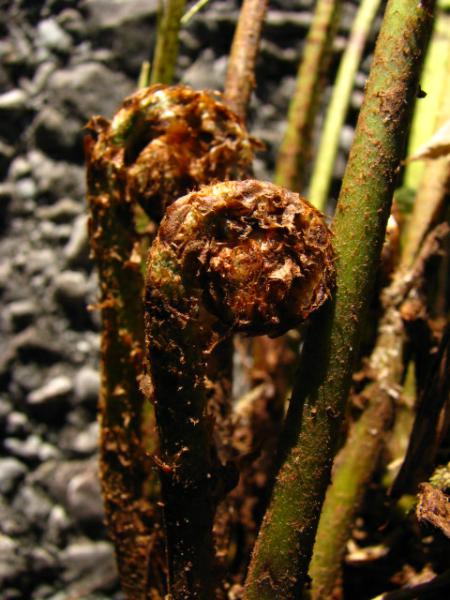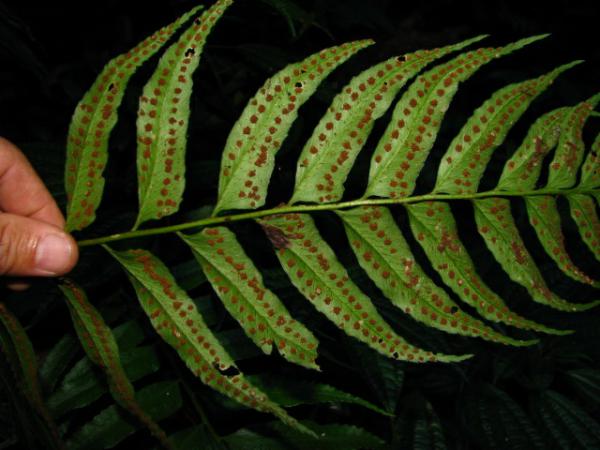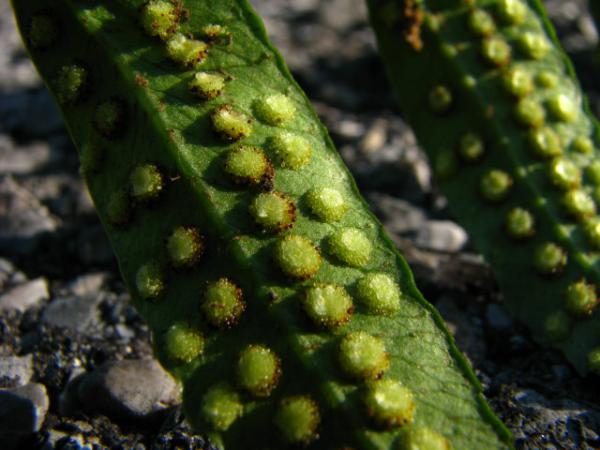
Polystichum hookerianum (C.Presl) C.Chr.
Family
Dryopteridaceae
Nomenclature
Polystichum hookerianum (C.Presl) C.Chr., Index Filic. 67. 1905. – Aspidium caducum Wall. ex Hook. & Grev., Icon. Filic. 2: t. 171. 1831, non Kunth 1815. – Lastrea hookeriana C.Presl, Tent. Pterid. 77. 1836. – Cyrtomium caducum T.Moore, Index Filic. 276. 1861, nom. illeg. [superfluous name]. – Dryopteris caduca Kuntze, Revis. Gen. Pl. 2: 812. 1891, nom. illeg. – Polystichum caducum Diels, Nat. Pfl anzenfam. 1(4): 194. 1899, nom. illeg. – Cyrtomium hookerianum (C.Presl) C.Chr., Index Filic., Suppl. 101. 1913. – Phanerophlebia hookeriana (C.Presl) Copel., Gen. Fil. 111. 1947. – Phanerophlebiopsis hookeriana (C.Presl) Fraser-Jenk., Himalayan Ferns (Guide to Polystichum) 42. 1997. – Phanerophlebiopsis caduca Fraser-Jenk., New Sp. Syndr. Indian Pteridol. 190. 1997, nom. inval. [name rejected by the same author in the same publication] – Lectotype : Wallich 381, Nepal, 1821, lectotype E! [barcode: E00348308], lectotypified by Suksathan et al, Thai Forest Bulletin (Botany), 38: 121 (2010); isolectotypes at E (E00348309 - fragment, E00348310, E00428057, E00428058, E00428059) and K-W (x2).
Description
Rhizome short, erect, 1.5–2 cm in diam., bearing up to 14 fronds, apex scaly; scales ovate-oblong, apex acuminate, base rounded, to 5 by 2 mm, bicoloured, central portion shining castaneous brown, the edges light brown, margin minutely laciniate. Stipes stramineous, 34–55 cm long by 3 mm in diam., grooved above, sparsely scaly with small pale brown ovate scales c. 1–2 mm long throughout. Fronds with lamina oblong-lanceolate in outline, 71–85 by 18–24 cm, apex pinnatifid and shortly acuminate; rachis grooved above, sparsely scaly throughout with the same scale type as present on the stipe; simply pinnate with 17–27 pairs of free lateral pinnae (i.e. excluding pinnatifid apex), 4–6 cm apart near base, gradually becoming closer upwards, 1–4 pairs of basal pinnae slightly reduced or not; pinnae oblong, falcate, to 14 by 2.5 cm, subcoriaceous, upper surface dark green, shiny, glabrous or with a few minute scales, lower surface light green, minutely scaly throughout, acroscopic base truncate to broadly cuneate, sometimes also slightly auriculate, basiscopic base slightly to strongly dimidiate, with 2–3 mm long stalk, margin subentire at the base, becoming coarsely serrate toward an acuminate apex; costae narrowly grooved above, slightly raised below; veins partially anastomosing, forming 1–3(–4) rows of areoles, free near the margin, included veinlets (simple and excurrent) in the costal areoles. Sori in 1–2 rows on each side of costa, first row usually terminal or subterminal (rarely dorsal) on included veinlets, second row appearing to be dorsal on both anastomosing and free veins but actually terminal on microscopic branches obscured by the sporangia, round, 1–2 mm in diameter; indusia thin, somewhat round with entire but irregular margins, peltate, glabrous, caducous, c. 1–2 mm in diameter; sporangia numerous, glabrous; receptacles distinctly raised and persistent. Spores monolete .
Distribution in Thailand
NORTHERN: Chiang Mai.
Wider Distribution
Nepal, North-East India, China (Tibet, Yunnan, Sichuan, Guizhou, Hunan, Guangxi), Burma, northern Vietnam, Taiwan, Japan.
Ecology
On rocks and humus-rich soil by a small stream in dense lower montane forest at 1900–2000 m altitude, locally rare.
Proposed IUCN Conservation Assessment
Least Concern (LC). This species is widespread and not under any known threat.
Habit
Whole plant
Croziers
Lower surface of lamina
Sori
Site hosted by the Royal Botanic Garden Edinburgh. Content managed by Stuart Lindsay, Gardens by the Bay, Singapore and David Middleton, Singapore Botanic Gardens. Last updated 24 January 2012
